Oregon Ecosystems Coast, Rainshadows, & Habitat Diversity

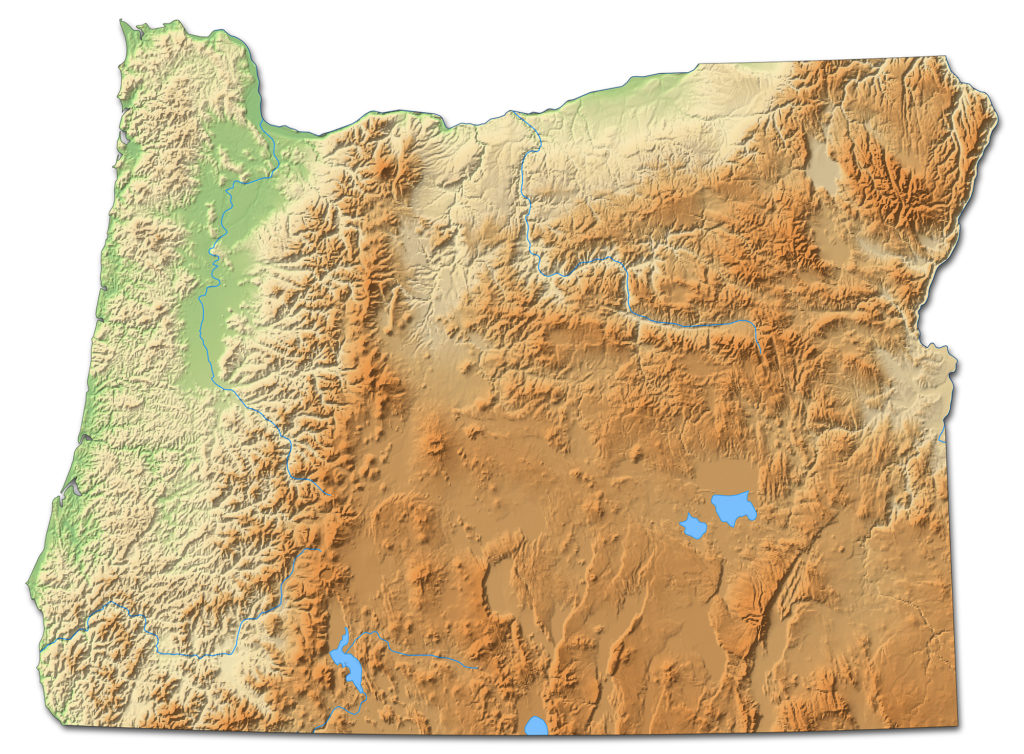
Oregon Ecosystem Outcomes
-
Describe the rainshadow effect.
-
Provide the locations of two large rainshadows in Oregon.
-
Describe changes in vegetation as you head west to east across Oregon.
When you look at a physical map of Oregon, it is clear that there are a variety of terrestrial ecosystems: green forests to sandy deserts.
It is also apparent that these ecosystems are not running along horizontal latitude lines: mountains are having a significant impact on climate and vegetation.
This video provides an overview of the rainshadow effect, explaining why Corvallis is generally drier in the summers than Newport along the coast.
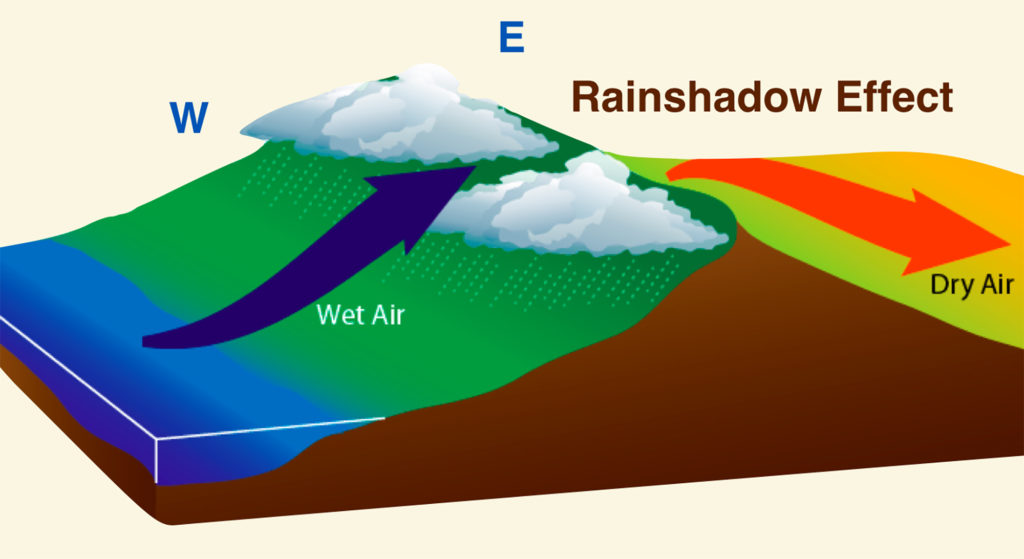
Moist and relatively warm air coming off the ocean heads up a mountain. These air currents typically run west to east. As the moist air cools, rain precipitates out on the west-facing side of the mountain. This leaves drier air heading to the east-facing side of the mountain, creating a rainshadow effect on the east side.
Oregon has two large mountain ranges, creating two large rainshadows. This video tour through them.
We have two large mountain ranges in Oregon: the Coastal Range and the Cascades. Which numbers indicate the location of rainshadows created by these mountain ranges?
Answer: 2 & 4
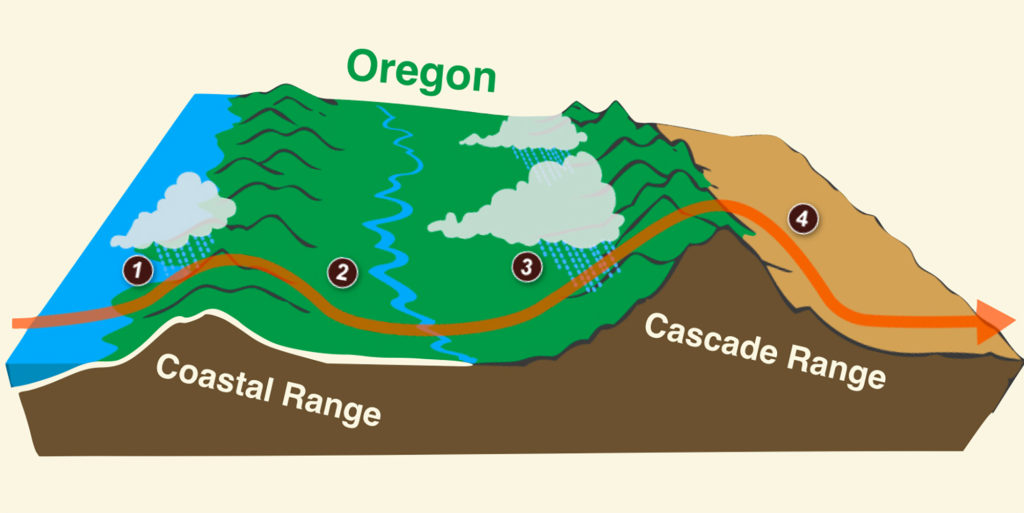

Along the Oregon coast, the high moisture keeps temperature relatively constant, with less extreme hot and cold temperatures than other locations at similar latitude.
The mountains rise very close to the ocean, forcing air to rise, cool, and precipitate out fog and rain. Many people escape the dry heat of the Willamette Valley by driving to the coast.
The west-facing slope of the coastal range is largely temperate rainforest, moist and cool enough to support moss, ferns, and trees like Sitka Spruce.
Although we are focusing on terrestrial ecosystems here, there are several rivers flowing to the ocean.

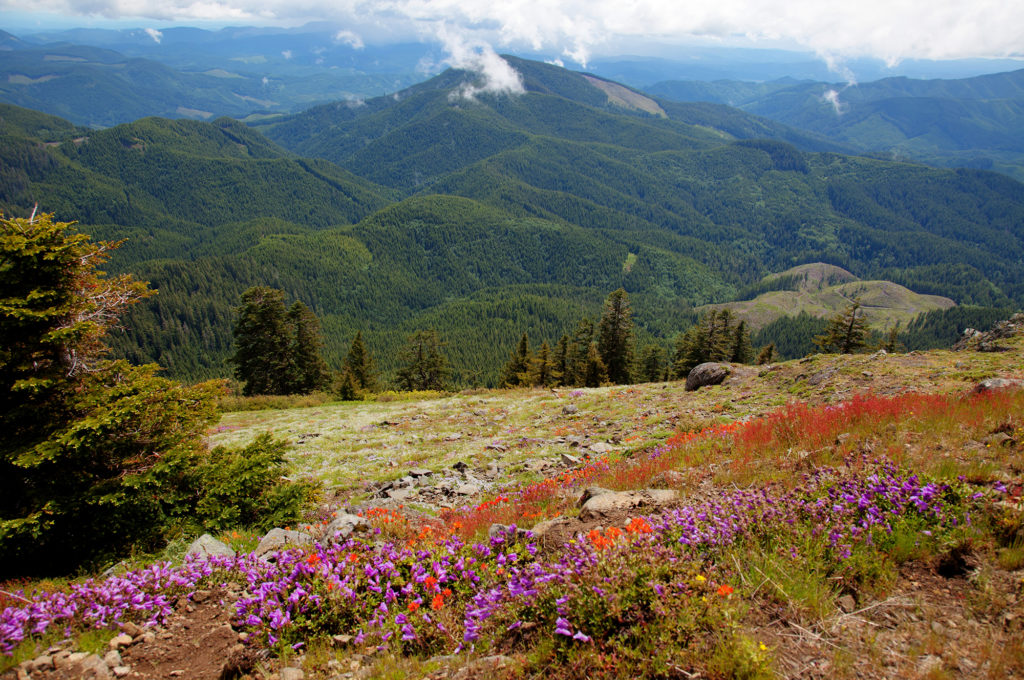
The tallest point of the Coastal Range is Mary\’s Peak at 4097 feet. It has a meadow at the peak and trails for hiking. It can have snow for months, and since it is a close drive from Corvallis, many people get a snow pass and visit the peak in the winter months.
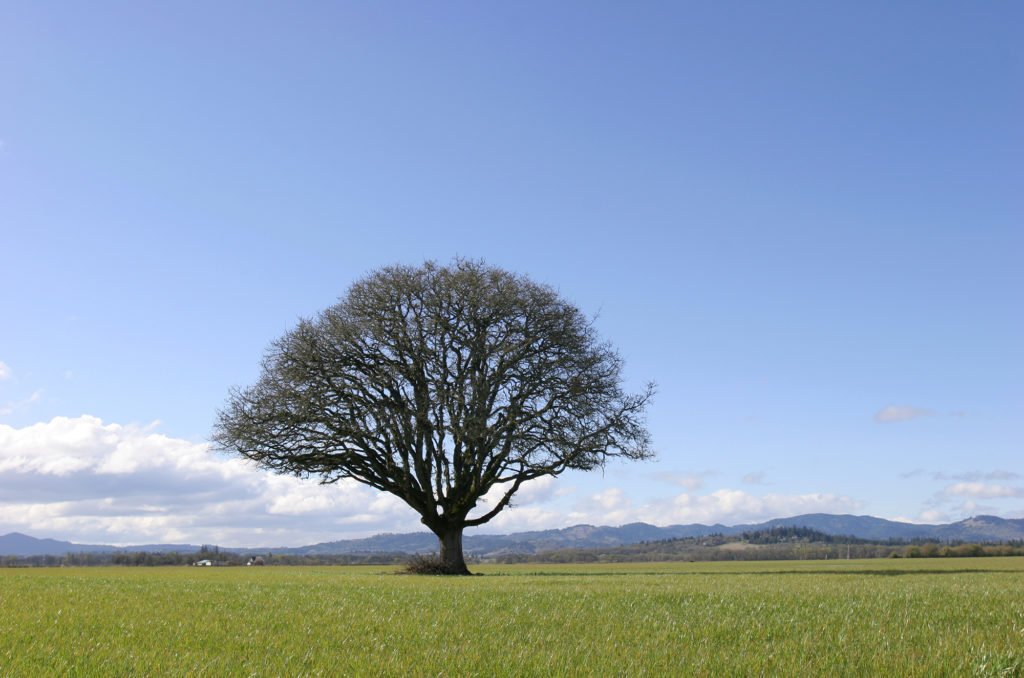
The Willamette Valley is in the rainshadow of the Coastal Range, and even though the winters are wet, the summers can be quite dry. Historically, the valley was oak prairie, wetlands, and coniferous forest. Now, much of the land is converted for agricultural, commercial, and residential use.
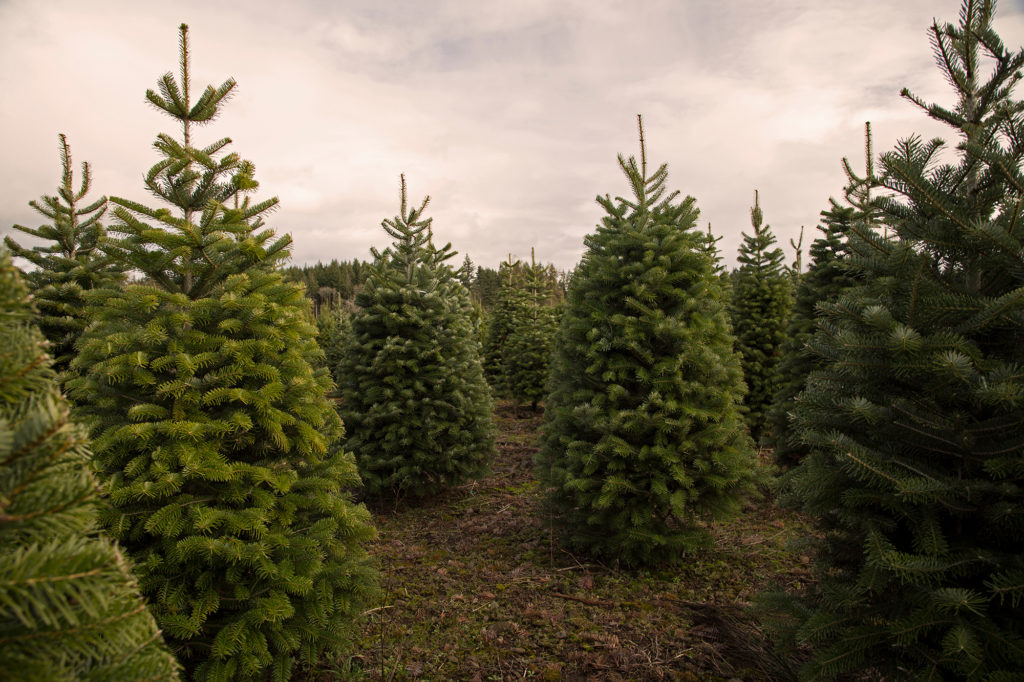
Dry summers with cool nights are not optimal for many crops. Two of the primary land uses are growing Christmas trees and grass seed.
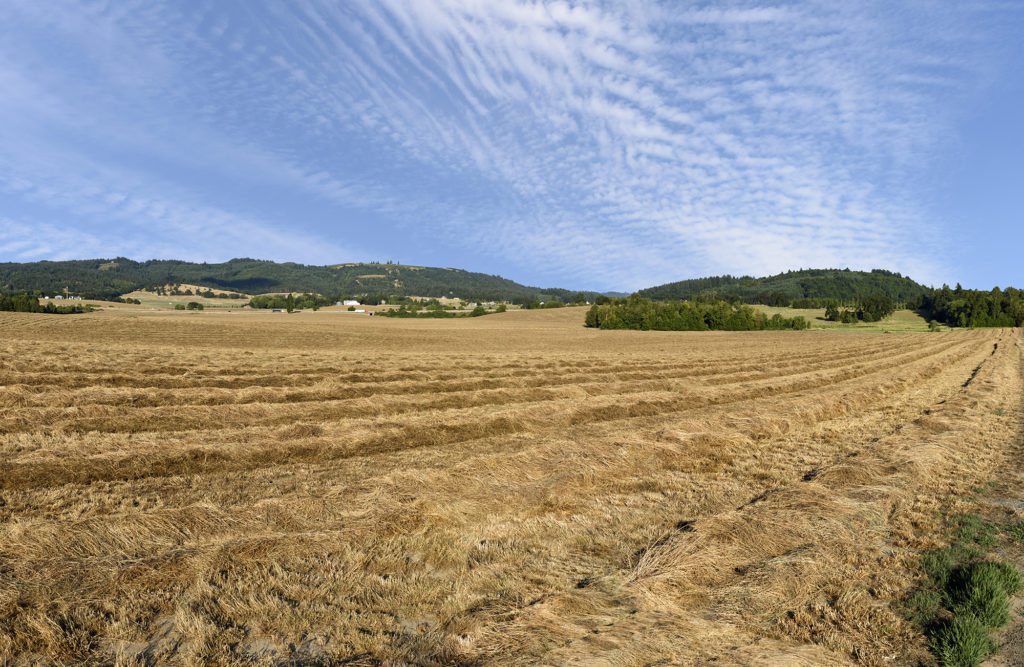

The west-facing slope of the Cascade Mountains has more moisture than the Willamette Valley as the air is rising, cooling, and precipitating. There are matches of temperate rainforest, including Cascadia State Park and Silver Falls..
Extensive forests of Douglas Fir and Hemlock are supported by the available moisture.
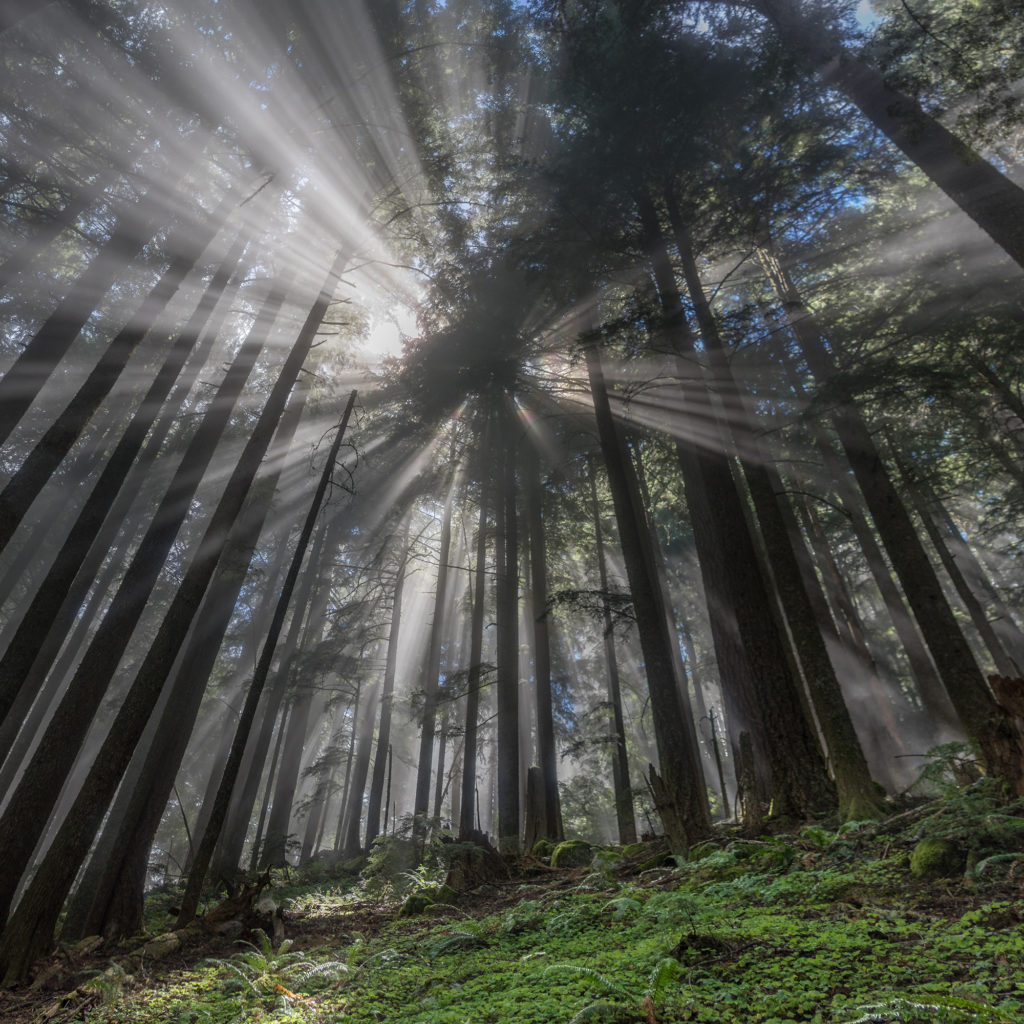

At higher elevations, temperature and moisture drop, and the dominant trees are Ponderosa Pines with their thick puzzle-piece bark.
Above tree-line where moisture and temperature drops significantly, meadows of low-lying plants replace the trees.
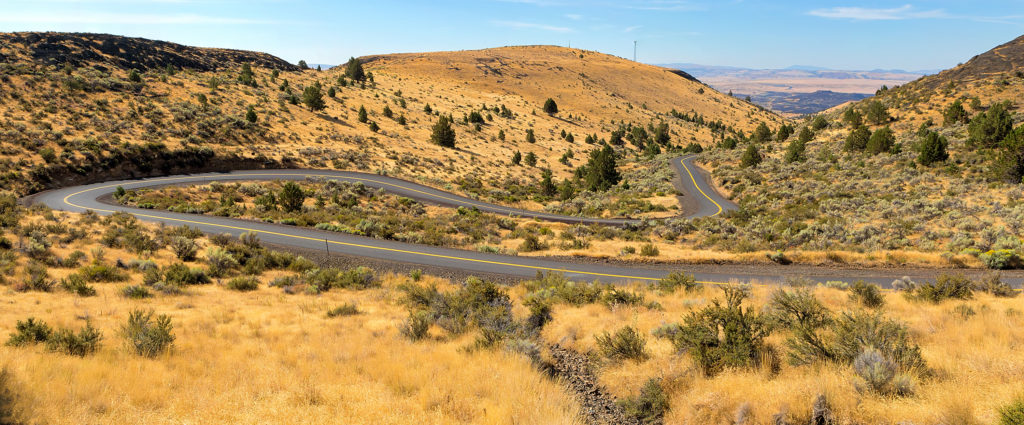
Eastern Oregon is a high desert, high because it is at elevation and can be cold, and a desert due to the rainshadow created by the Cascade Mountains.
Vegetation includes shrubs, grasses, and wildflowers. Some areas are so dry, vegetation is sparse; crops and livestock are supported by irrigation.
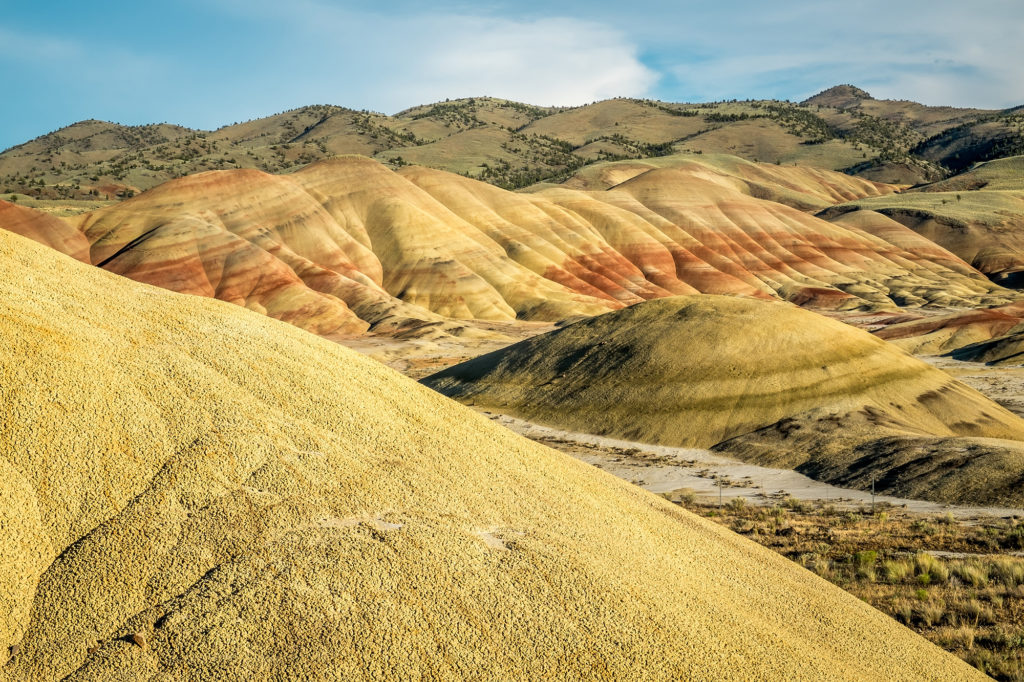
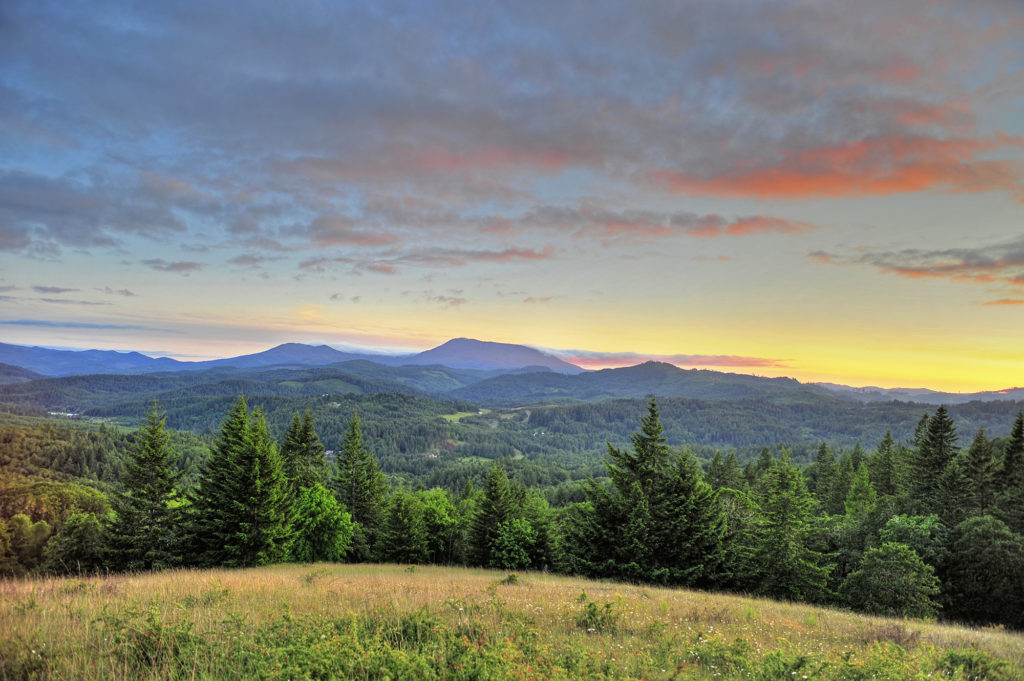
Check your knowledge. Can you:
-
describe the rainshadow effect?
-
provide the locations of two large rainshadows in Oregon?
-
describe changes in vegetation as you head west to east across Oregon?